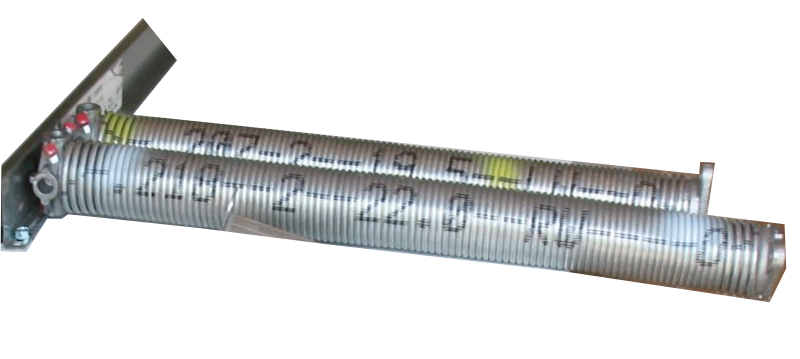Maximizing Cycle Life on Unmatched Torsion Springs

Steve from New Jersey called me today and asked me how many turns to wind on his torsion springs. He had purchased springs from another company that said he should order the same springs the manufacturer had originally provided for the door. Being mechanically inclined, he knew the springs should be wound differently but didn't know just how to calculate the number of turns so both springs would last the same length of time.
He had bought a 30" and a 27" spring for a seven-foot high garage door. Both springs had 1 3/4" inside diameters and .225 wire. As long as the only difference between the springs is the length, the formula for matching cycle life is simple; it is based on winding the same number of turns per inch on both springs.
In Steve's case, the springs needed to average about 7 1/2 turns to balance the door. I started with seven turns for the shorter spring, knowing that the longer spring would be good for more than 7 1/2 turns. Dividing seven turns by 27" gave me .26 turns per inch. In order to get the same number of cycles out of the longer 30" spring, I multiplied 30" by .26 to get 7.8 turns, slightly over 7 3/4 turns.
These two springs now have the same cycle rating, but the average number of turns is only 7.4 turns. This difference is normally not noticeable. Even when we advise 7.5 turns, we also recommend adding or subtracting 1/4 turn as needed to properly balance the door. I recommended that Steve do this. Additional support is available on our YouTube videos titled "Garage Door Torsion Springs" and "How to Wind your EZ-Set Torsion Springs."
A more precise way to determine the number of turns per inch is to divide the total number of turns on both springs by the combined length of both springs. Thus, 15 turns / 27" + 30" = .263 turns per inch. Multiplying the 27" spring by .263 will give you 7.1 turns. Multiplying the 30" spring by .263 will give you 7.9 turns. It is important to remember that this formula only works if both springs have the same inside diameter and the same wire size.
The simpler way to maximize torsion spring life is to order springs that are evenly matched in lift and cycle life. Steve's shorter spring lasted 14,000 cycles; his 30" spring had 10,000 cycles remaining that were wasted. We sell both springs for $67.17. Had the springs been matched, he would have gotten 18,000 cycles. 14,000 / 18,000 x $67.17 = $52.24 worth of spring. He lost $14.93 worth of spring plus the extra labor.
Having worked in manufacturing earlier in my career, I know there is nothing magical about the springs manufacturers choose for their garage doors. The manufacturer's priorities are balancing the doors, minimizing costs, and meeting or exceeding DASMA's industry minimum standards for cycle life. Steve's springs had met this standard.
Many manufacturers, however, do not make maximizing cycle life a priority; they would have to either double their torsion spring inventory or process their own springs. Either of these add costs to the bottom line. Inventory levels also run low at times, and substitutions are made, often without regard for cycle life.
Our mission at DDM Garage Doors, Inc. is to strive for perfection, to improve what is out there - increasing cycles, improving the door balance, maximizing cycle life. We do it out of stewardship and duty; it becomes a moral issue because of who we are as followers of Jesus Christ. This is just one of many ways we seek to fulfill our greater purpose of glorifying God.


